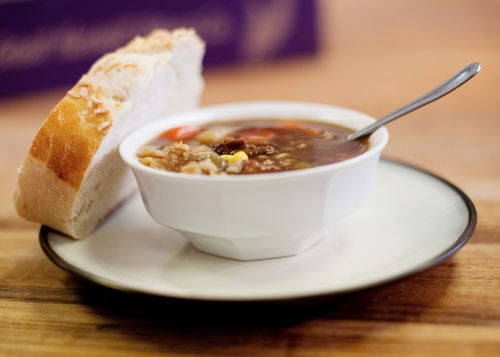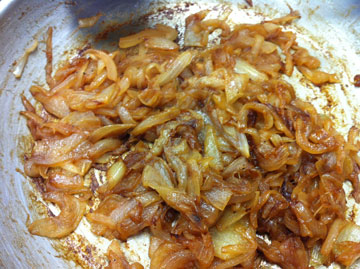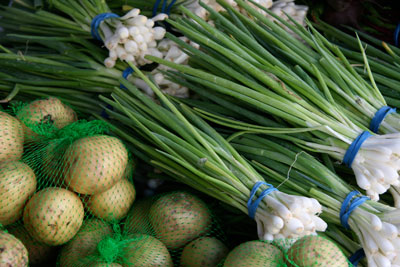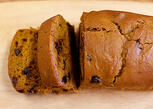
It is a time for making saucy dishes that are great sopped up with thick hearty slices of bread from your local Great Harvest like chili, stews, and pot roast. Since the colder weather is a great time for roasting things like vegetables and developing deep, rich flavors I thought I would share with you some quick tips for harnessing fall flavors and techniques:
Caramelizing onions:
A few weeks ago I shared my recipe for roasted butternut squash soup that utilized caramelized onions as a powerhouse flavor base. I thought I would reiterate the importance that these play in my fall and winter kitchen repertoire. By slowly cooking down and allowing the natural sugars in the onions to caramelize, an unparalleled savory magic unfolds. My 3 favorite uses:
- Add them to roasted Brussels sprouts, potatoes, or parsnips at the end of cooking and create utter vegetable magic.
- Fold them into mashed potatoes along with some grated parmesan cheese for one of my favorite accompaniments to roasted meats.
- Add a drizzle of balsamic vinegar towards the end of the caramelization process and create a sweet-savory jam that can be spread on warm bread or utilized in a sandwich with some sliced apple or pear and a ripe brie cheese.
I keep some in my fridge almost constantly during the winter months. Here's how to caramelize onions:
 Melt one tablespoon unsalted butter in a heavy bottom stainless steel or cast iron skillet (nonstick pans do not work here) set over medium heat. Add two thinly sliced yellow or red onions, season with kosher salt and black pepper and cook very slowly until deeply brown and almost melting, about 30 minutes, stirring and adjusting heat as necessary. Cool and use for a variety of applications. They will last in the refrigerator for about a week.
Melt one tablespoon unsalted butter in a heavy bottom stainless steel or cast iron skillet (nonstick pans do not work here) set over medium heat. Add two thinly sliced yellow or red onions, season with kosher salt and black pepper and cook very slowly until deeply brown and almost melting, about 30 minutes, stirring and adjusting heat as necessary. Cool and use for a variety of applications. They will last in the refrigerator for about a week.
Roasting Vegetables = Ultimate flavor development & less nutrition loss:
I hardly ever boil or steam vegetables anymore. By roasting vegetables of all kinds in a hot oven tossed with just a bit of olive oil, herbs, salt, and pepper I am able to really develop deep complex flavors and textures just not possible on the stovetop. Less nutrients are lost as well, since valuable vitamins and minerals are not being leached into the water. There are obvious candidates for roasting that include root vegetables and winter squashes, but if you have not  tasted roasted broccoli, cauliflower, green beans, Brussels sprouts, or even kohlrabi and beets – you are in for an incredible treat. People that don’t even like some of the above find that roasting really brings out some of the inherent sweetness in these vegetables and makes them surprisingly addictive. Additions like chopped garlic, lemon zest, balsamic vinegar, and spices such as coriander and cumin can also really add sparkle. Simply peel and cut vegetables if necessary, place on a foil lined sheet pan for easy clean up and toss with olive oil, salt/pepper, and any of the above seasonings or fresh herbs. Roast at 450 degrees for 15-25 minutes until browned and tender.
tasted roasted broccoli, cauliflower, green beans, Brussels sprouts, or even kohlrabi and beets – you are in for an incredible treat. People that don’t even like some of the above find that roasting really brings out some of the inherent sweetness in these vegetables and makes them surprisingly addictive. Additions like chopped garlic, lemon zest, balsamic vinegar, and spices such as coriander and cumin can also really add sparkle. Simply peel and cut vegetables if necessary, place on a foil lined sheet pan for easy clean up and toss with olive oil, salt/pepper, and any of the above seasonings or fresh herbs. Roast at 450 degrees for 15-25 minutes until browned and tender.
Utilize Sweet and Savory Flavors Combinations:
Fall is a time when our bodies start to crave richer and sweeter flavors, probably triggered by our evolutionary need to add a little  extra buffer in the cold winter months. It is no secret that sweet and savory components complement each other magically. It is that perfect combination of sweet, savory, and salty that our palates crave in comfort food. Things like roasted carrots, celery root, sweet potatoes, turnips, and Brussels sprouts can go from ho-hum to amazing with the addition of a drizzle of honey, maple syrup, molasses, agave, or even apple cider. I often pair roasted root vegetables with autumn fruits as well. Roasting some pear, apple, or quince along with some root vegetables can really be a revelation.
extra buffer in the cold winter months. It is no secret that sweet and savory components complement each other magically. It is that perfect combination of sweet, savory, and salty that our palates crave in comfort food. Things like roasted carrots, celery root, sweet potatoes, turnips, and Brussels sprouts can go from ho-hum to amazing with the addition of a drizzle of honey, maple syrup, molasses, agave, or even apple cider. I often pair roasted root vegetables with autumn fruits as well. Roasting some pear, apple, or quince along with some root vegetables can really be a revelation.
 At Great Harvest bakeries around the country, our autumn menus are filled with seasonal favorites such as cranberry orange bread, pumpkin chocolate chip bread, baked apple goods in a wide array, and of course our famous autumn spice cookies.
At Great Harvest bakeries around the country, our autumn menus are filled with seasonal favorites such as cranberry orange bread, pumpkin chocolate chip bread, baked apple goods in a wide array, and of course our famous autumn spice cookies.
What are your secrets for tantalizing fall flavors at your house?



